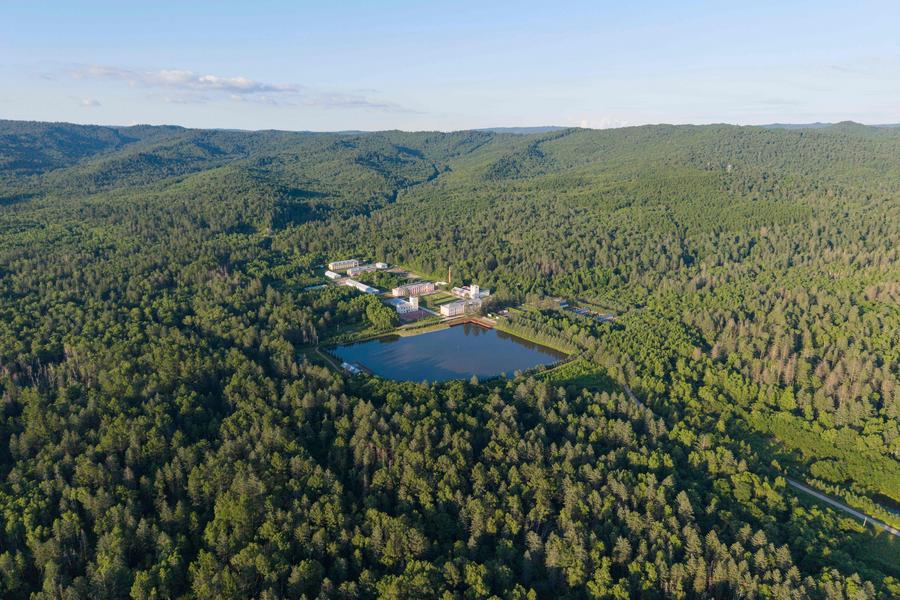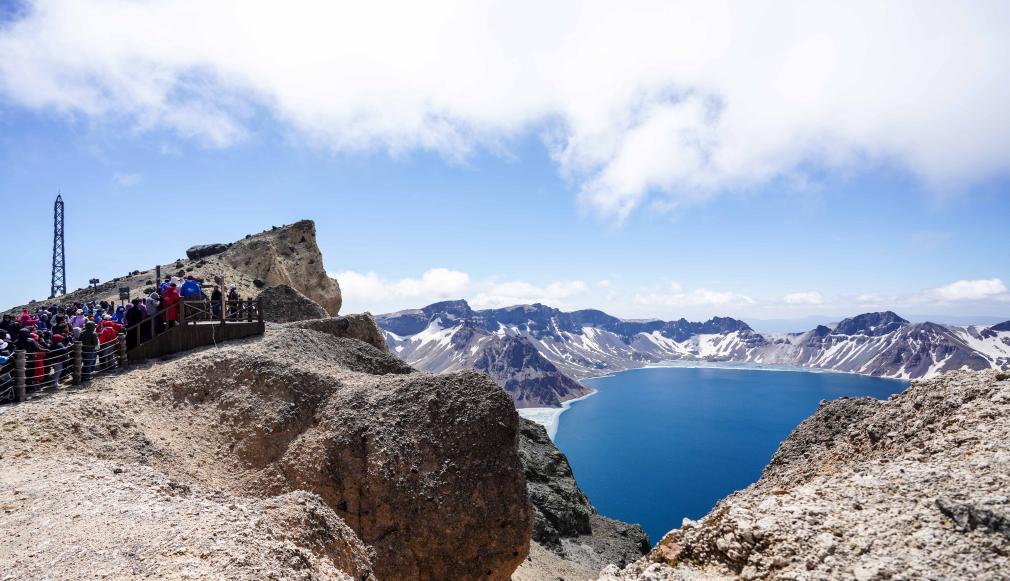
An aerial drone photo shows a view of the Liangshui national nature reserve in Yichun City, northeast China's Heilongjiang Province, July 15, 2025. (Xinhua/Xie Jianfei)
CHANGCHUN, July 17 (Xinhua) -- With heat waves gripping the hemisphere, China's cool northeast is experiencing a boom in summer tourism as people escape the heat.
In China's northeastern provinces of Jilin, Heilongjiang and Liaoning, located roughly between 42 and 53 degrees north latitude, popular summer retreats are promoting their natural landscapes, such as mountains, forests, rivers and lakes, while diversifying into cultural and adventure tourism that goes far beyond traditional cooling retreats.
"Stepping off the plane, I was instantly enveloped in this crisp, cool air," recalled Wu Xinyi, a Shanghai high school student on a study trip to Jilin Province's Changbai Mountain.
Exploring lush vegetation in the 22 degrees Celsius mountain forests has become a magnet for heat-weary travelers across China. This stands in stark contrast to cities like Shanghai -- China's humid eastern metropolis currently enduring sweltering 35 degrees Celsius. In early July, multiple provinces, including Henan in central China and Shandong in the east, issued orange and even red-level heat alerts.
During the four-day tour, Wu and her classmates tracked the dramatic shift in vegetation -- from mixed broadleaf-coniferous forests at the mountain's base to pure coniferous stands at higher elevations.
Wu described this study tour as "incredibly rewarding," having visited renowned scenic sites like the Tianchi crater lake while deepening her geographical knowledge. "I have understood how temperature, rainfall and soil interact to shape vegetation patterns," she added.

Tourists enjoy the scenery of the Tianchi Lake on Changbai Mountain in northeast China's Jilin Province on May 24, 2024. (Xinhua/Yan Linyun)
Changbai Mountain is a typical summer resort, which has obtained two world-class brands, namely UNESCO Biosphere Reserve and Global Geopark. The mountain area has over 87 percent forest coverage, owing to sustained conservation efforts.
This summer, a flurry of educational camps are held in this area, including volcano expeditions, blueberry picking and ethnic culture experiences.
Ren Jing, a parent from Shenzhen, joined a six-day family camp. "The camp included guided forest hikes, scenic tours and photography services. It charged 5,000 yuan (about 700 U.S. dollars) per adult and 3,000 yuan per child, which is a fair price," she said.
Previously "winter-only" ski resorts now thrive in summer with reinvented offerings. At Changbaishan Beautiful China Resort, themed parks cater to diverse tastes: a family-friendly farm with petting zoos and fruit picking, and adventure zones featuring canopy walks, water sports and a river-crossing zip-line.
"We expect over 300,000 visitors this summer," said Lei Yanwen from the resort's marketing team.
With technological support, even the winter's iconic 'rime ice' -- frost formed on tree branches -- has become a summer attraction. In Jilin City, an indoor lab recreates the phenomenon at minus 6 degrees Celsius year-round. The 470-square-meter facility features a circular walkway flanked by dozens of willow and pine trees, their branches perpetually adorned with glistening frost crystals.
"Unbelievable! Just days ago I was suffering through the summer heat at home, and now I've literally 'time-traveled' to winter," marveled tourist Li Sijie from central China's Henan, crunching through artificial snow in a down jacket.
According to data from Chinese travel platform Mafengwo, northeast China maintains strong appeal as a summer destination with its cool climate. Yichun, a city known as China's "forest capital," saw a 155 percent surge in search popularity ranking second nationwide, while the coastal city of Dalian also cracked the top five hottest destinations.
Beyond shared cool climates, each northeastern province offers distinct attractions.
Heilongjiang capitalizes on its century-old musical heritage with the annual "Harbin Summer Music Festival," featuring accordion weeks and orchestra competitions. From concert halls to street corners, visitors can experience the seamless blend of musical heritage and contemporary artistry in the balmy summer breeze.
Liaoning, meanwhile, merges tourism with its coastal culture. Anglers can enjoy a full sensory experience here: predawn fishing expeditions from the Changshan Islands, freshly caught seafood lunches at waterfront guesthouses, sunset beach walks and after-dark cultural immersion with fishermen's traditional chants.
"Cool weather draws visitors, but diverse and immersive experiences retain them, from wellness and eco-adventures to cultural activities. Destinations must move beyond basic sightseeing to deliver personalized, memorable moments by innovating services and activities," said Liu Li, a tourism expert at Jilin International Studies University.












